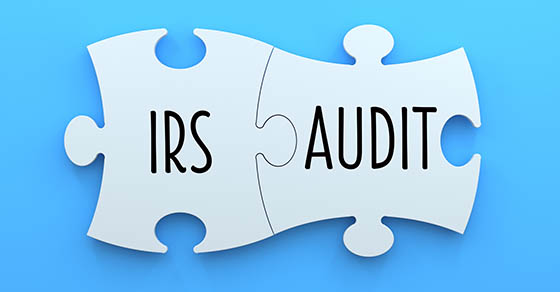Weekly Tax Brief
What local transportation costs can your business deduct?
- Details
- Published: 11 October 2022 11 October 2022

You and your small business are likely to incur a variety of local transportation costs each year. There are various tax implications for these expenses.
First, what is “local transportation?” It refers to travel in which you aren’t away from your tax home (the city or general area in which your main place of business is located) long enough to require sleep or rest. Different rules apply if you’re away from your tax home for significantly more than an ordinary workday and you need sleep or rest in order to do your work.
Costs of traveling to your work location
The most important feature of the local transportation rules is that your commuting costs aren’t deductible . In other words, the fare you pay or the miles you drive simply to get to work and home again are personal and not business miles. Therefore, no deduction is available. This is the case even if you work during the commute (for example, via a cell phone, or by performing business-related tasks while on the subway).
An exception applies for commuting to a temporary work location that’s outside of the metropolitan area in which you live and normally work. “Temporary,” for this purpose, means a location where your work is realistically expected to last (and does in fact last) for no more than a year.
Costs of traveling from work location to other sites
On the other hand, once you get to the work location, the cost of any local trips you take for business purposes is a deductible business expense. So, for example, the cost of travel from your office to visit a customer or pick up supplies is deductible. Similarly, if you have two business locations, the costs of traveling between them is deductible.
Recordkeeping
If your deductible trip is by taxi or public transportation, save a receipt if possible or make a notation of the expense in a logbook. Record the date, amount spent, destination and business purpose. If you use your own car, note miles driven instead of the amount spent. Note also any tolls paid or parking fees and keep receipts.
You’ll need to allocate your automobile expenses between business and personal use based on miles driven during the year. Proper recordkeeping is crucial in the event the IRS challenges you.
Your deduction can be computed using:
- A standard mileage rate (58.5¢ per business mile driven between Jan. 1 and June 30, 2022, and 62.5¢ per business mile driven between July 1 and Dec. 31, 2022) plus tolls and parking, or
- Actual expenses (including depreciation, subject to limitations) for the portion of car use allocable to the business. For this method, you’ll need to keep track of all costs for gas, repairs and maintenance, insurance, interest on a car loan and any other car-related costs.
Employees versus self-employed
From 2018 – 2025, employees, may not deduct unreimbursed local transportation costs. That’s because “miscellaneous itemized deductions” — a category that includes employee business expenses — are suspended (not allowed) for 2018 through 2025. However, self-employed taxpayers can deduct the expenses discussed in this article. But beginning with 2026, business expenses (including unreimbursed employee auto expenses) of employees are scheduled to be deductible again, as long as the employee’s total miscellaneous itemized deductions exceed 2% of adjusted gross income.
Contact us with any questions or to discuss the matter further.
© 2022
Investing in the future with a 529 education plan
- Details
- Published: 06 October 2022 06 October 2022

If you have a child or grandchild who’s going to attend college in the future, you’ve probably heard about qualified tuition programs, also known as 529 plans. These plans, named for the Internal Revenue Code section that provides for them, allow prepayment of higher education costs on a tax-favored basis.
There are two types of programs:
- Prepaid plans, which allow you to buy tuition credits or certificates at present tuition rates, even though the beneficiary (child) won’t be starting college for some time; and
- Savings plans, which depend on the investment performance of the fund(s) you place your contributions in.
You don’t get a federal income tax deduction for a contribution, but the earnings on the account aren’t taxed while the funds are in the program. (Contributors are eligible for state tax deductions in some states.) You can change the beneficiary or roll over the funds in the program to another plan for the same or a different beneficiary without income tax consequences.
Distributions from the program are tax-free up to the amount of the student’s “qualified higher education expenses.” These include tuition (including up to $10,000 in tuition for an elementary or secondary public, private or religious school), fees, books, supplies and required equipment. Reasonable room and board is also a qualified expense if the student is enrolled at least half time.
Distributions from a 529 plan can also be used to make tax-free payments of principal or interest on a loan to pay qualified higher education expenses of the beneficiary or a sibling of the beneficiary.
What about distributions in excess of qualified expenses? They’re taxed to the beneficiary to the extent that they represent earnings on the account. A 10% penalty tax is also imposed.
Eligible schools include colleges, universities, vocational schools or other postsecondary schools eligible to participate in a student aid program of the U.S. Department of Education. This includes nearly all accredited public, nonprofit and for-profit postsecondary institutions.
However, “qualified higher education expenses” also include expenses for tuition in connection with enrollment or attendance at an elementary or secondary public, private or religious school.
A school should be able to tell you whether it qualifies.
The contributions you make to the qualified tuition program are treated as gifts to the student, but the contributions qualify for the gift tax exclusion amount ($16,000 for 2022, adjusted for inflation). If your contributions in a year exceed the exclusion amount, you can elect to take the contributions into account ratably over a five-year period starting with the year of the contributions. Thus, assuming you make no other gifts to that beneficiary, you could contribute up to $80,000 per beneficiary in 2022 without gift tax. (In that case, any additional contributions during the next four years would be subject to gift tax, except to the extent that the exclusion amount increases.) You and your spouse together could contribute $160,000 for 2022 per beneficiary, subject to any contribution limits imposed by the plan.
A distribution from a qualified tuition program isn’t subject to gift tax, but a change in beneficiary or rollover to the account of a new beneficiary may be. Contact us with questions about tax-saving ways to save and pay for college.
© 2022
Worried about an IRS audit? Prepare in advance
- Details
- Published: 05 October 2022 05 October 2022

IRS audit rates are historically low, according to a recent Government Accountability Office (GAO) report , but that’s little consolation if your return is among those selected to be examined. Plus, the IRS recently received additional funding in the Inflation Reduction Act to improve customer service, upgrade technology and increase audits of high-income taxpayers. But with proper preparation and planning, you should fare well.
From tax years 2010 to 2019, audit rates of individual tax returns decreased for all income levels, according to the GAO. On average, the audit rate for all returns decreased from 0.9% to 0.25%. IRS officials attribute this to reduced staffing as a result of decreased funding. Businesses, large corporations and high-income individuals are more likely to be audited but, overall, all types of audits are being conducted less frequently than they were a decade ago.
There’s no 100% guarantee that you won’t be picked for an audit, because some tax returns are chosen randomly. However, the best way to survive an IRS audit is to prepare in advance. On an ongoing basis you should systematically maintain documentation — invoices, bills, cancelled checks, receipts, or other proof — for all items to be reported on your tax returns. Keep all records in one place.
Audit targets
It also helps to know what might catch the attention of the IRS. Certain types of tax-return entries are known to involve inaccuracies so they may lead to an audit. Here are a few examples:
- Significant inconsistencies between tax returns filed in the past and your most current return,
- Gross profit margin or expenses markedly different from those of other businesses in your industry, and
- Miscalculated or unusually high deductions.
Certain types of deductions may be questioned by the IRS because there are strict recordkeeping requirements for them — for example, auto and travel expense deductions. In addition, an owner-employee’s salary that’s much higher or lower than those at similar companies in his or her location may catch the IRS’s eye, especially if the business is structured as a corporation.
If you receive a letter
If you’re selected for an audit, you’ll be notified by letter. Generally, the IRS doesn’t make initial contact by phone. But if there’s no response to the letter, the agency may follow up with a call.
Many audits simply request that you mail in documentation to support certain deductions you’ve claimed. Only the strictest version, the field audit, requires meeting with one or more IRS auditors. (Note: Ignore unsolicited email or text messages about an audit. The IRS doesn’t contact people in this manner. These are scams.)
The tax agency doesn’t demand an immediate response to a mailed notice. You’ll be informed of the discrepancies in question and given time to prepare. Collect and organize all relevant income and expense records. If anything is missing, you’ll have to reconstruct the information as accurately as possible based on other documentation.
If you’re audited, our firm can help you:
- Understand what the IRS is disputing (it’s not always clear),
- Gather the specific documents and information needed, and
- Respond to the auditor’s inquiries in the most effective manner.
The IRS normally has three years within which to conduct an audit, and an audit probably won’t begin until a year or more after you file a return. Don’t panic if the IRS contacts you. Many audits are routine. By taking a meticulous, proactive approach to tracking, documenting and filing your company’s tax-related information, you’ll make an audit less painful and even decrease the chances you’ll be chosen in the first place.
© 2022
Year-end tax planning ideas for individuals
- Details
- Published: 29 September 2022 29 September 2022

Now that fall is officially here, it’s a good time to start taking steps that may lower your tax bill for this year and next.
One of the first planning steps is to ascertain whether you’ll take the standard deduction or itemize deductions for 2022. Many taxpayers won’t itemize because of the high 2022 standard deduction amounts ($25,900 for joint filers, $12,950 for singles and married couples filing separately and $19,400 for heads of household). Also, many itemized deductions have been reduced or abolished under current law.
If you do itemize, you can deduct medical expenses that exceed 7.5% of adjusted gross income (AGI), state and local taxes up to $10,000, charitable contributions, and mortgage interest on a restricted amount of debt, but these deductions won’t save taxes unless they’re more than your standard deduction.
Bunching, pushing, pulling
Some taxpayers may be able to work around these deduction restrictions by applying a “bunching” strategy to pull or push discretionary medical expenses and charitable contributions into the year where they’ll do some tax good. For example, if you’ll be able to itemize deductions this year but not next, you may want to make two years’ worth of charitable contributions this year.
Here are some other ideas to consider:
- Postpone income until 2023 and accelerate deductions into 2022 if doing so enables you to claim larger tax breaks for 2022 that are phased out over various levels of AGI. These include deductible IRA contributions, child tax credits, education tax credits and student loan interest deductions. Postponing income also is desirable for taxpayers who anticipate being in a lower tax bracket next year due to changed financial circumstances. However, in some cases, it may pay to accelerate income into 2022. For example, that may be the case if you expect to be in a higher tax bracket next year.
- If you’re eligible, consider converting a traditional IRA into a Roth IRA by year end. This is beneficial if your IRA invested in stocks (or mutual funds) that have lost value. Keep in mind that the conversion will increase your income for 2022, possibly reducing tax breaks subject to phaseout at higher AGI levels.
- High-income individuals must be careful of the 3.8% net investment income tax (NIIT) on certain unearned income. The surtax is 3.8% of the lesser of: 1) net investment income (NII), or 2) the excess of modified AGI (MAGI) over a threshold amount. That amount is $250,000 for joint filers or surviving spouses, $125,000 for married individuals filing separately and $200,000 for others. As year-end nears, the approach taken to minimize or eliminate the 3.8% surtax depends on your estimated MAGI and NII for the year. Keep in mind that NII doesn’t include distributions from IRAs or most retirement plans.
- It may be advantageous to arrange with your employer to defer, until early 2023, a bonus that may be coming your way.
- If you’re age 70½ or older by the end of 2022, consider making 2022 charitable donations via qualified charitable distributions from a traditional IRA — especially if you don’t itemize deductions. These distributions are made directly to charities from your IRA and the contribution amount isn’t included in your gross income or deductible on your return.
- Make gifts sheltered by the annual gift tax exclusion before year end. In 2022, the exclusion applies to gifts of up to $16,000 made to each recipient. These transfers may save your family taxes if income-earning property is given to relatives in lower income tax brackets who aren’t subject to the kiddie tax.
These are just some of the year-end steps that may save taxes. Contact us to tailor a plan that will work best for you.
© 2022
Work Opportunity Tax Credit provides help to employers
- Details
- Published: 27 September 2022 27 September 2022

In today’s tough job market and economy, the Work Opportunity Tax Credit (WOTC) may help employers. Many business owners are hiring and should be aware that the WOTC is available to employers that hire workers from targeted groups who face significant barriers to employment. The credit is worth as much as $2,400 for each eligible employee ($4,800, $5,600 and $9,600 for certain veterans and $9,000 for “long-term family assistance recipients”). It’s generally limited to eligible employees who begin work for the employer before January 1, 2026.
The IRS recently issued some updated information on the pre-screening and certification processes. To satisfy a requirement to pre-screen a job applicant, a pre-screening notice must be completed by the job applicant and the employer on or before the day a job offer is made. This is done by filing Form 8850, Pre-Screening Notice and Certification Request for the Work Opportunity Credit.
Which new hires qualify?
An employer is eligible for the credit only for qualified wages paid to members of a targeted group. These groups are:
- Qualified members of families receiving assistance under the Temporary Assistance for Needy Families (TANF) program,
- Qualified veterans,
- Qualified ex-felons,
- Designated community residents,
- Vocational rehabilitation referrals,
- Qualified summer youth employees,
- Qualified members of families in the Supplemental Nutritional Assistance Program (SNAP),
- Qualified Supplemental Security Income recipients,
- Long-term family assistance recipients, and
- Long-term unemployed individuals.
Other rules and requirements
There are a number of requirements to qualify for the credit. For example, there’s a minimum requirement that each employee must have completed at least 120 hours of service for the employer. Also, the credit isn’t available for certain employees who are related to or who previously worked for the employer.
There are different rules and credit amounts for certain employees. The maximum credit available for the first-year wages is $2,400 for each employee, $4,000 for long-term family assistance recipients, and $4,800, $5,600 or $9,600 for certain veterans. Additionally, for long-term family assistance recipients, there’s a 50% credit for up to $10,000 of second-year wages, resulting in a total maximum credit of $9,000 over two years.
For summer youth employees, the wages must be paid for services performed during any 90-day period between May 1 and September 15. The maximum WOTC credit available for summer youth employees is $1,200 per employee.
A beneficial credit
In some cases, employers may elect not to claim the WOTC. And in limited circumstances, the rules may prohibit the credit or require an allocation of it. However, for most employers hiring from targeted groups, the credit can be beneficial. Contact us with questions or for more information about your situation.
© 2022
Don’t forget income taxes when planning your estate
- Details
- Published: 23 September 2022 23 September 2022

As a result of the current estate tax exemption amount ($12.06 million in 2022), many estates no longer need to be concerned with federal estate tax. Before 2011, a much smaller amount resulted in estate plans attempting to avoid it. But now, because many estates won’t be subject to estate tax, more planning can be devoted to saving income taxes for your heirs.
While saving both income and transfer taxes has always been a goal of estate planning, it was more difficult to succeed at both when the estate and gift tax exemption level was much lower. Here are three considerations.
Plan gifts that use the annual gift tax exclusion. One of the benefits of using the gift tax annual exclusion to make transfers during life is to save estate tax. This is because both the transferred assets and any post-transfer appreciation generated by those assets are removed from the donor’s estate.
As mentioned, estate tax savings may not be an issue because of the large estate exemption amount. Further, making an annual exclusion transfer of appreciated property carries a potential income tax cost because the recipient receives the donor’s basis upon transfer. Thus, the recipient could face income tax, in the form of capital gains tax, on the sale of the gifted property in the future. If there’s no concern that an estate will be subject to estate tax, even if the gifted property grows in value, then the decision to make a gift should be based on other factors.
For example, gifts may be made to help a relative buy a home or start a business. But a donor shouldn’t gift appreciated property because of the capital gain that could be realized on a future sale by the recipient. If the appreciated property is held until the donor’s death, under current law, the heir will get a step-up in basis that will wipe out the capital gain tax on any pre-death appreciation in the property’s value.
Take spouses’ estates into account. In the past, spouses often undertook complicated strategies to equalize their estates so that each could take advantage of the estate tax exemption amount. Generally, a two-trust plan was established to minimize estate tax. “Portability,” or the ability to apply the decedent’s unused exclusion amount to the surviving spouse’s transfers during life and at death, became effective for estates of decedents dying after 2010. As long as the election is made, portability allows the surviving spouse to apply the unused portion of a decedent’s applicable exclusion amount (the deceased spousal unused exclusion amount) as calculated in the year of the decedent’s death. The portability election gives married couples more flexibility in deciding how to use their exclusion amounts.
Be aware that some estate exclusion or valuation discount strategies to avoid inclusion of property in an estate may no longer be worth pursuing. It may be better to have the property included in the estate or not qualify for valuation discounts so that the property receives a step-up in basis. For example, the special use valuation — the valuation of qualified real property used for farming or in a business on the basis of the property’s actual use, rather than on its highest and best use — may not save enough, or any, estate tax to justify giving up the step-up in basis that would otherwise occur for the property.
If you’d like to discuss these strategies and how they relate to your estate plan, contact us.
© 2022
2022 Q4 tax calendar: Key deadlines for businesses and other employers
- Details
- Published: 20 September 2022 20 September 2022

Here are some of the key tax-related deadlines affecting businesses and other employers during the fourth quarter of 2022. Keep in mind that this list isn’t all-inclusive, so there may be additional deadlines that apply to you. Contact us to ensure you’re meeting all applicable deadlines and to learn more about the filing requirements.
Note: Certain tax-filing and tax-payment deadlines may be postponed for taxpayers who reside in or have businesses in federally declared disaster areas.
Monday, October 3
The last day you can initially set up a SIMPLE IRA plan, provided you (or any predecessor employer) didn’t previously maintain a SIMPLE IRA plan. If you’re a new employer that comes into existence after October 1 of the year, you can establish a SIMPLE IRA plan as soon as administratively feasible after your business comes into existence.
Monday, October 17
- If a calendar-year C corporation that filed an automatic six-month extension:
- File a 2021 income tax return (Form 1120) and pay any tax, interest and penalties due.
- Make contributions for 2021 to certain employer-sponsored retirement plans.
Monday, October 31
- Report income tax withholding and FICA taxes for third quarter 2022 (Form 941) and pay any tax due. (See exception below under “November 10.”)
Thursday, November 10
- Report income tax withholding and FICA taxes for third quarter 2022 (Form 941), if you deposited on time (and in full) all of the associated taxes due.
Thursday, December 15
- If a calendar-year C corporation, pay the fourth installment of 2022 estimated income taxes.
Contact us if you’d like more information about the filing requirements and to ensure you’re meeting all applicable deadlines.
© 2022
Seller-paid points: Can homeowners deduct them?
- Details
- Published: 15 September 2022 15 September 2022

In its latest report, the National Association of Realtors (NAR) announced that July 2022 existing home sales were down but prices were up nationwide, compared with last year. “The ongoing sales decline reflects the impact of the mortgage rate peak of 6% in early June,” said NAR Chief Economist Lawrence Yun. However, he added that “home sales may soon stabilize since mortgage rates have fallen to near 5%, thereby giving an additional boost of purchasing power to home buyers.”
If you’re buying a home, or you just bought one, you may wonder if you can deduct mortgage points paid on your behalf by the seller. The answer is “yes,” subject to some important limitations described below.
Basics of points
Points are upfront fees charged by a mortgage lender, expressed as a percentage of the loan principal. Points, which may be deductible if you itemize deductions, are normally the buyer’s obligation. But a seller will sometimes sweeten a deal by agreeing to pay the points on the buyer’s mortgage loan.
In most cases, points that a buyer pays are a deductible interest expense. And seller-paid points may also be deductible.
Suppose, for example, that you bought a home for $600,000. In connection with a $500,000 mortgage loan, your bank charged two points, or $10,000. The seller agreed to pay the points in order to close the sale.
You can deduct the $10,000 in the year of sale. The only disadvantage is that your tax basis is reduced to $590,000, which will mean more gain if — and when — you sell the home for more than that amount. But that may not happen until many years later, and the gain may not be taxable anyway. You may qualify for an exclusion for up to $250,000 ($500,000 for a married couple filing jointly) of gain on the sale of a principal residence.
Important limits
There are some important limitations on the rule allowing a deduction for seller-paid points. The rule doesn’t apply:
- To points that are allocated to the part of a mortgage above $750,000 ($375,000 for married filing separately) for tax years 2018 through 2025 (above $1 million for tax years before 2018 and after 2025);
- To points on a loan used to improve (rather than buy) a home;
- To points on a loan used to buy a vacation or second home, investment property or business property; and
- To points paid on a refinancing, home equity loan or line of credit.
Tax aspects of the transaction
We can review with you in more detail whether the points in your home purchase are deductible, as well as discuss other tax aspects of your transaction.
© 2022
Separating your business from its real estate
- Details
- Published: 13 September 2022 13 September 2022

Does your business need real estate to conduct operations? Or does it otherwise hold property and put the title in the name of the business? You may want to rethink this approach. Any short-term benefits may be outweighed by the tax, liability and estate planning advantages of separating real estate ownership from the business.
Tax implications
Businesses that are formed as C corporations treat real estate assets as they do equipment, inventory and other business assets. Any expenses related to owning the assets appear as ordinary expenses on their income statements and are generally tax deductible in the year they’re incurred.
However, when the business sells the real estate, the profits are taxed twice — at the corporate level and at the owner’s individual level when a distribution is made. Double taxation is avoidable, though. If ownership of the real estate were transferred to a pass-through entity instead, the profit upon sale would be taxed only at the individual level.
Protecting assets
Separating your business ownership from its real estate also provides an effective way to protect it from creditors and other claimants. For example, if your business is sued and found liable, a plaintiff may go after all of its assets, including real estate held in its name. But plaintiffs can’t touch property owned by another entity.
The strategy also can pay off if your business is forced to file for bankruptcy. Creditors generally can’t recover real estate owned separately unless it’s been pledged as collateral for credit taken out by the business.
Estate planning options
Separating real estate from a business may give you some estate planning options, too. For example, if the company is a family business but some members of the next generation aren’t interested in actively participating, separating property gives you an extra asset to distribute. You could bequest the business to one heir and the real estate to another family member who doesn’t work in the business.
Handling the transaction
The business simply transfers ownership of the real estate and the transferee leases it back to the company. Who should own the real estate? One option: The business owner could purchase the real estate from the business and hold title in his or her name. One concern is that it’s not only the property that’ll transfer to the owner, but also any liabilities related to it.
Moreover, any liability related to the property itself could inadvertently put the business at risk. If, for example, a client suffers an injury on the property and a lawsuit ensues, the property owner's other assets (including the interest in the business) could be in jeopardy.
An alternative is to transfer the property to a separate legal entity formed to hold the title, typically a limited liability company (LLC) or limited liability partnership (LLP). With a pass-through structure, any expenses related to the real estate will flow through to your individual tax return and offset the rental income.
An LLC is more commonly used to transfer real estate. It’s simple to set up and requires only one member. LLPs require at least two partners and aren’t permitted in every state. Some states restrict them to certain types of businesses and impose other restrictions.
Proceed cautiously
Separating the ownership of a business’s real estate isn’t always advisable. If it’s worthwhile, the right approach will depend on your individual circumstances. Contact us to help determine the best approach to minimize your transfer costs and capital gains taxes while maximizing other potential benefits.
© 2022
Is your income high enough to owe two extra taxes?
- Details
- Published: 09 September 2022 09 September 2022

High-income taxpayers face two special taxes — a 3.8% net investment income tax (NIIT) and a 0.9% additional Medicare tax on wage and self-employment income. Here’s an overview of the taxes and what they may mean for you.
3.8% NIIT
This tax applies, in addition to income tax, on your net investment income. The NIIT only affects taxpayers with adjusted gross income (AGI) exceeding $250,000 for joint filers, $200,000 for single taxpayers and heads of household, and $125,000 for married individuals filing separately.
If your AGI is above the threshold that applies ($250,000, $200,000 or $125,000), the NIIT applies to the lesser of 1) your net investment income for the tax year or 2) the excess of your AGI for the tax year over your threshold amount.
The “net investment income” that’s subject to the NIIT consists of interest, dividends, annuities, royalties, rents and net gains from property sales. Wage income and income from an active trade or business isn’t included. However, passive business income is subject to the NIIT.
Income that’s exempt from income tax, such as tax-exempt bond interest, is likewise exempt from the NIIT. Thus, switching some taxable investments to tax-exempt bonds can reduce your exposure. Of course, this should be done after taking your income needs and investment considerations into account.
How does the NIIT apply to home sales? If you sell your principal residence, you may be able to exclude up to $250,000 of gain ($500,000 for joint filers) when figuring your income tax. This excluded gain isn’t subject to the NIIT.
However, gain that exceeds the exclusion limit is subject to the tax. Gain from the sale of a vacation home or other second residence, which doesn’t qualify for the exclusion, is also subject to the NIIT.
Distributions from qualified retirement plans, such as pension plans and IRAs, aren’t subject to the NIIT. However, those distributions may push your AGI over the threshold that would cause other types of income to be subject to the tax.
Additional 0.9% Medicare tax
Some high-wage earners pay an extra 0.9% Medicare tax on part of their wage income, in addition to the 1.45% Medicare tax that all wage earners pay. The 0.9% tax applies to wages in excess of $250,000 for joint filers, $125,000 for a married individuals filing separately and $200,000 for all others. It applies only to employees, not to employers.
Once an employee’s wages reach $200,000 for the year, the employer must begin withholding the additional 0.9% tax. However, this withholding may prove insufficient if the employee has additional wage income from another job or if the employee’s spouse also has wage income. To avoid that result, an employee may request extra income tax withholding by filing a new Form W-4 with the employer.
An extra 0.9% Medicare tax also applies to self-employment income for the tax year in excess of the same amounts for wage earners. This is in addition to the regular 2.9% Medicare tax on all self-employment income. The $250,000, $125,000, and $200,000 thresholds are reduced by the taxpayer's wage income.
Reduce the impact
As you can see, these two taxes may have a significant effect on your tax bill. Contact us to discuss these taxes and how their impact could be reduced.
© 2022





